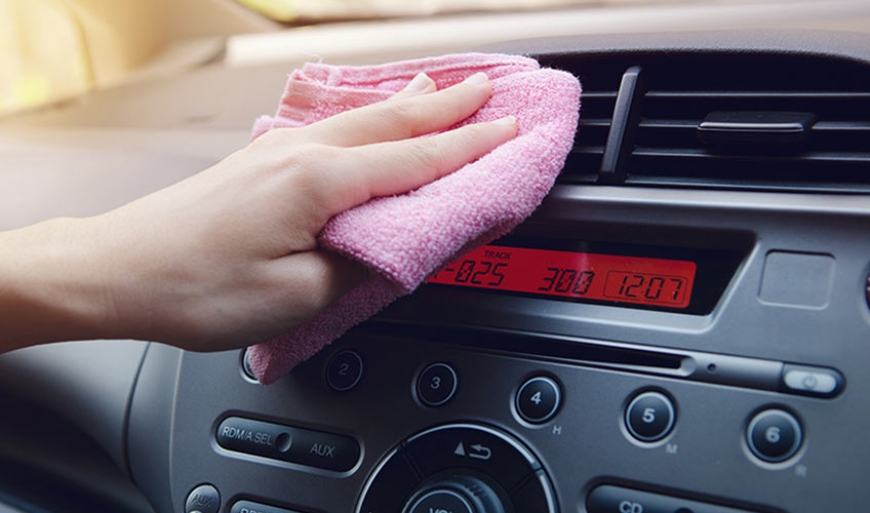The Secret to Controlling Interior Vehicle Dust
Find out how to maintain that new-car look in the showroom with antistatic additives.

Vehicles undoubtedly look their best on their first day at the dealership. But after sitting on display for a few weeks, they begin to collect dust from pollen, textile fibers and even skin cells. Over time, dust can create an unsightly layer on interior plastic trim parts. This eyesore can ruin the vehicle’s aesthetic appearance and even affect potential buyer interest.
In order to keep vehicles looking their best, OEMs and suppliers must be proactive about preventing dust accumulation. Let’s look at the causes of buildup, available solutions and some best practices.
What causes dust buildup? Dust accumulation occurs because of triboelectric static electricity — the same friction-based static electricity we encounter every day. Surface friction causes the buildup of a static electric charge as electrons are exchanged between the surface of the plastic part and another object. The buildup begins during part production and continues through shipment, installation and finally use. The negatively charged plastic then begins to attract positively charged dust particles. If unaddressed, a layer of dust will collect on instrument panels, center consoles, doors, pillars and other plastic surfaces in just a few weeks.
For decades, the only weapon in the battle against dashboard dust was a rag. While manual dusting is effective, busy manufacturers and dealerships rarely have the time. Between manufacture, shipping, installation and time at the dealership, it is nearly impossible to keep every car looking new. For this reason, dealerships seldom perform interior detailing, if at all. So what’s the solution?
Compounded antistatic polymers produce parts that repel dust and uphold a vehicle’s interior clean look, and they provide an alternative to laborious cleaning. Material suppliers now offer several types of compounded antistatic, dust-repelling plastics for this reason.
For automotive interior component makers, economies of scale often dictate the bulk purchase of one type of antistatic compound. But using the same dust-repelling plastics to make multiple parts means all components will have similar antistatic properties, despite different performance requirements. The result is a vehicle with an uneven mixture of interior parts – some with a proper level of antistatic performance and others that have been over- or under-engineered.
To avoid these issues, manufacturers can use masterbatch additives that allow each component’s antistatic properties to be tailored based on the antistatic performance needed. This gives tier suppliers and OEMs the freedom to add appropriate levels of antistatic properties to specific parts. For example, rear seat trim can be molded with lower levels of antistatic material because these parts are less likely to attract a buyer’s attention. By the same token, an OEM may choose higher levels of antistatic additive for the instrument panel and center console, because they tend to collect more dust than parts such as visors or door handles.
Antistatic additives also help streamline vehicle production. Parts begin to attract dust as soon as they are made, and exposure to unclean environments requires parts to be cleaned prior to each production step. Using antistatic masterbatches can minimize these cleaning processes.
Suppliers and OEMs looking for a broader color palette will also benefit from masterbatches. While most antistatic parts do not have good bonding surfaces for paint, masterbatches allow for the inclusion of colorants to achieve molded-in color without the need for paint.
Antistatic properties found in masterbatch additives have a limited duration – properties typically last six to 12 months. However, this is still plenty of time to achieve dust prevention during the period of highest buyer sensitivity. Permanent alternatives exist, but they are often cost prohibitive for most vehicles.
If antistatic masterbatches seem like a good fit for your vehicle, consider these steps:
- Evaluate each plastic part in your vehicle’s interior and identify those most suitable for antistatic additives.
- Establish performance expectations for each part. These should include level and duration of antistatic performance, color requirements, and time on dealership lots and showrooms.
- Consult with an antistatic masterbatch expert to discuss the impact of different production processes. Injection molding, blow molding, extrusion and other processes all affect part performance in varying ways and may require adjustments in additive type and quantity.
Ready to stop static before the dust settles? Consult with one of our experts or view our Cesa™ Stat Antistatic Additives.
